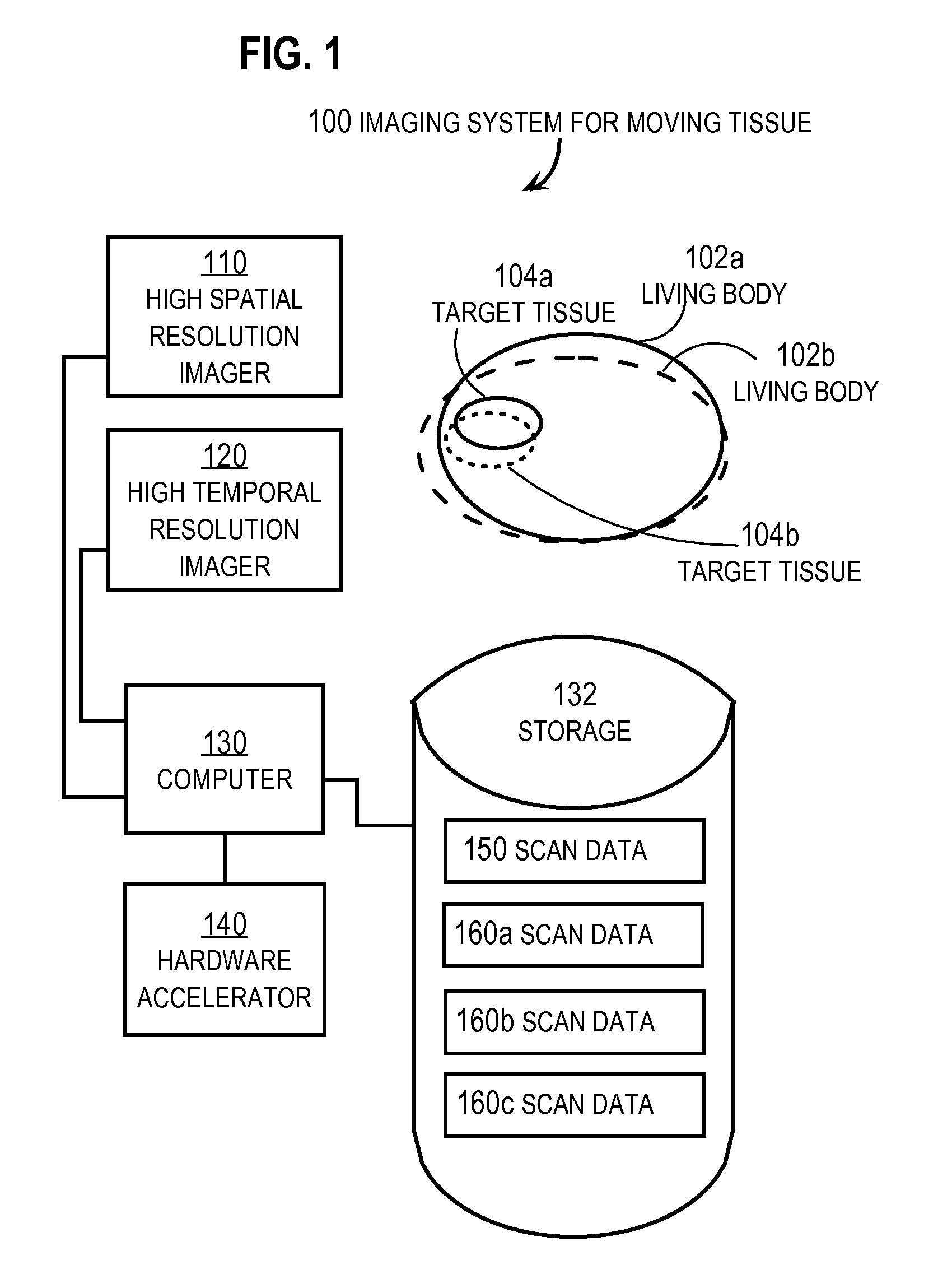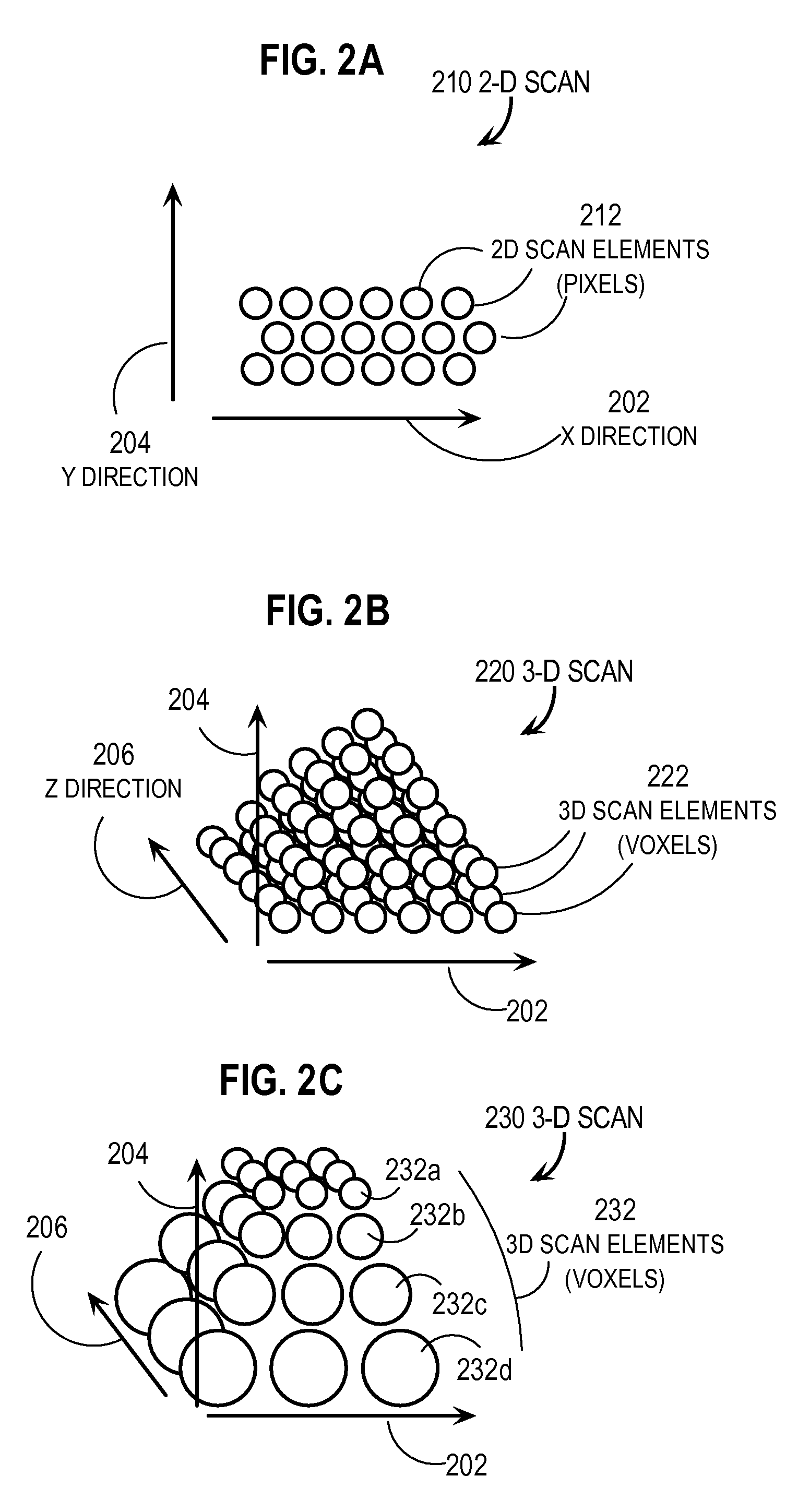Real-time Elastic Registration to Determine Temporal Evolution of Internal Tissues for Image-Guided Interventions
a technology of elastic registration and temporal evolution, applied in the field of real-time elastic registration to determine the temporal evolution of internal tissues for image-guided interventions, can solve the problems of inability to accurately complete the entire treatment, inability to accurately scan the entire body, and single scan of the soft tissue, etc., to achieve high spatial resolution scan data, high temporal resolution, and high spatial resolution
- Summary
- Abstract
- Description
- Claims
- Application Information
AI Technical Summary
Problems solved by technology
Method used
Image
Examples
first embodiment
[0052] In a first embodiment, two or more CT scans taken at particular phases of a breathing cycle in a patient are elastically registered with each other and the registration transformation is interpolated to determine the arrangement of tissue at intervening times. This embodiment is described in more detail in section 3.
second embodiment
[0053] In a second embodiment, a CT scan taken at one time is registered to one or more ultrasound scans that have higher temporal resolution but lower spatial resolution. This embodiment is described in more detail in section 4. A scanning technology well suited to perform as the higher temporal resolution but lower spatial resolution is ultrasound imaging.
third embodiment
[0054] In a third embodiment, a full dose CT scan taken at one time is registered to one or more low dose CT scans that have higher temporal resolution but lower signal to noise. This embodiment is described in more detail in section 5.
PUM
 Login to View More
Login to View More Abstract
Description
Claims
Application Information
 Login to View More
Login to View More - R&D
- Intellectual Property
- Life Sciences
- Materials
- Tech Scout
- Unparalleled Data Quality
- Higher Quality Content
- 60% Fewer Hallucinations
Browse by: Latest US Patents, China's latest patents, Technical Efficacy Thesaurus, Application Domain, Technology Topic, Popular Technical Reports.
© 2025 PatSnap. All rights reserved.Legal|Privacy policy|Modern Slavery Act Transparency Statement|Sitemap|About US| Contact US: help@patsnap.com



